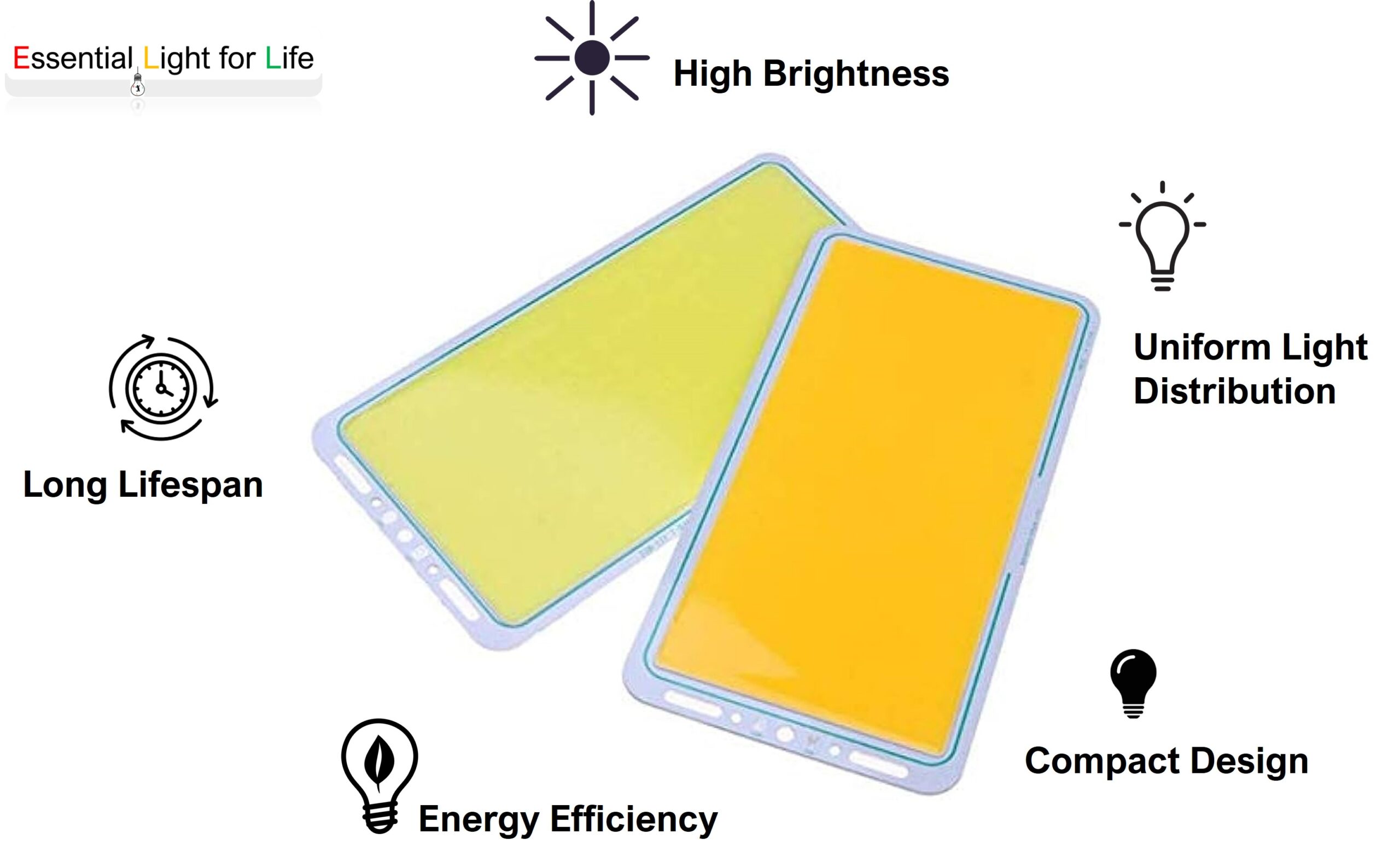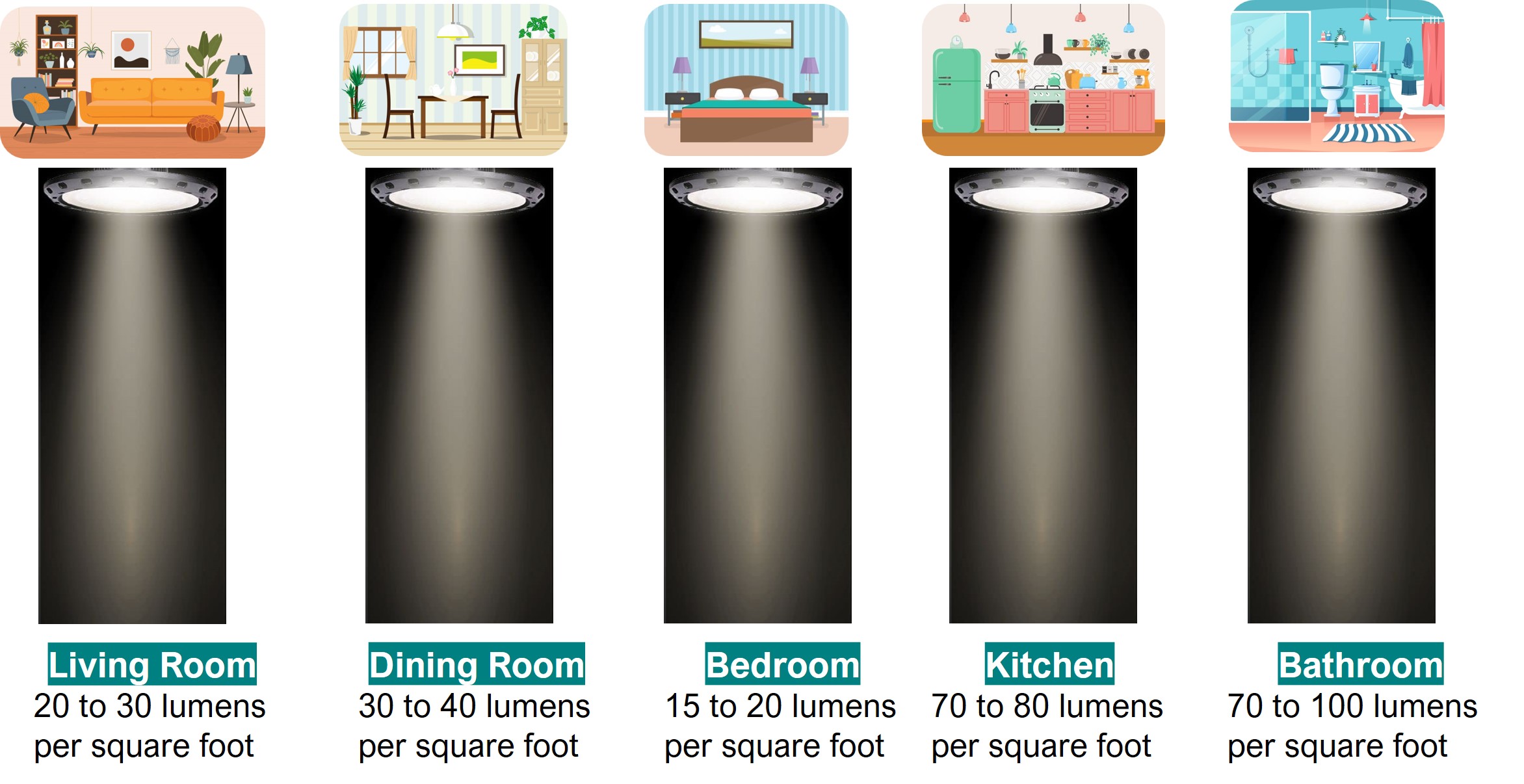COB (Chip on Board) LED panels have garnered significant attention in the lighting industry due to their unique design and enhanced performance. In this article, we’ll delve into the world of COB LED panels, exploring their advantages, disadvantages, and how they differ from standard LED panels. By the end, you’ll have a clear understanding of whether COB or LED panels are the better choice for your lighting needs.
What is a COB LED Panel?
A COB LED panel is an advanced lighting technology that features multiple LED chips mounted directly onto a single substrate, creating a powerful light source. Unlike traditional LED bulbs that use individual diodes, COB LED panels offer higher light output and improved efficiency. The close arrangement of LED chips in COB panels results in a more uniform and intense illumination, making them ideal for various applications, including indoor and outdoor lighting.
Unveiling the Brilliance of COB LED Panels
In the dynamic realm of illumination, the COB LED panel has emerged as a revolutionary force. COB, an acronym for Chip-on-Board, represents a breakthrough in LED technology, redefining the way we perceive and employ lighting solutions. This integration method involves multiple LED chips directly mounted onto a single substrate, generating intense and uniform light output. Let’s delve into the intricacies of COB LED panels, unravelling their distinctive attributes and unparalleled advantages.
COB Panel Light: A Fusion of Precision and Power
The COB panel light is a marvel of engineering, embodying a meticulous arrangement of LED chips. These chips, closely clustered together, eliminate the traditional boundaries between individual diodes. This amalgamation results in an exceptionally high lumen output, producing a brilliant and consistent luminance. Unlike conventional LED setups, COB technology maximizes space efficiency, allowing for a more compact and versatile lighting solution.
Efficiency at its Core: COB LED Panel Light
One of the hallmark features of COB LED panels is their remarkable efficiency. By aggregating multiple LED chips on a single board, COB technology minimizes energy losses, ensuring an optimal conversion of electrical power into illuminative brilliance. This efficiency not only translates into substantial energy savings but also extends the operational lifespan of the panel, reducing maintenance costs over time.
Unravelling the Advantages of COB Light and Panel Integration
The combination of COB technology with panel design introduces a myriad of benefits. Firstly, the uniformity of light distribution ensures that every corner of the illuminated area receives an equal measure of brightness. This translates into reduced glare and enhanced visual comfort. Additionally, COB LED panels exhibit superior color rendering capabilities, allowing for more accurate and vivid representation of the illuminated environment.
COB LED Panels: Beyond Illumination
Beyond their illuminative prowess, COB LED panels are characterized by their adaptability. Their slim profile and versatile form factor enable seamless integration into a wide range of environments. Whether illuminating a commercial space, enhancing residential interiors, or adding a touch of sophistication to architectural elements, COB LED panels transcend the boundaries of traditional lighting solutions.
A Glimpse into the Future: COB LED Panel Light
As the demand for energy-efficient and high-performing lighting solutions continues to surge, COB LED panels stand at the forefront of innovation. Their fusion of precision, power, and efficiency heralds a new era in lighting technology. From commercial applications to residential settings, the COB LED panel light promises to shape the way we perceive and interact with illuminated spaces.
Advantages of COB LED Panels:
- High Brightness: COB LED panels produce intense brightness, making them ideal for applications requiring powerful illumination, such as commercial spaces and outdoor lighting.
- Uniform Light Distribution: The closely-packed LED chips in COB panels create a seamless and even distribution of light, eliminating harsh glare and dark spots.
- Compact Design: COB LED panels offer a compact form factor, making them easier to integrate into various lighting fixtures.
- Energy Efficiency: With their high efficiency, COB LED panels consume less energy while providing ample light output, resulting in energy savings and reduced utility bills.
- Long Lifespan: COB LED panels are designed for longevity, offering extended lifespans that can surpass traditional lighting sources.
Disadvantages of COB LED Panels:
- Heat Generation: COB LED panels can generate more heat than standard LED bulbs, requiring adequate heat dissipation mechanisms in the lighting fixture design.
- Cost: COB LED panels may be relatively more expensive than standard LED bulbs, primarily due to the advanced technology and higher brightness output.
Difference Between LED Panel and COB LED:
The main difference lies in their design and illumination output. LED panels typically use individual LED diodes arranged on a flat panel to provide uniform lighting. On the other hand, COB LED panels use multiple LED chips mounted together on a single substrate, resulting in higher brightness and a more concentrated light source.
Which is Better: COB or LED?
The choice between COB and standard LED depends on your specific lighting requirements. If you need high brightness, uniform light distribution, and compact design, COB LED panels are an excellent choice. However, if cost is a significant concern, standard LED panels may be a more budget-friendly option. Ultimately, both options offer energy efficiency and durability, so the decision should be based on your specific lighting needs and budget constraints.
Conclusion:
COB LED panels are a remarkable lighting innovation, offering high brightness and uniform illumination. Despite the heat generation and slightly higher cost, their superior performance and efficiency make them an appealing choice for various applications. When considering COB or standard LED panels, weigh the advantages and disadvantages based on your lighting requirements and budget to make an informed decision. By embracing the cutting-edge technology of COB LED panels, you can illuminate your space with brilliance and efficiency, revolutionizing your lighting experience.
Frequently Asked Questions
Is COB LED better than LED?
COB (Chip-on-Board) LED is a type of LED technology. So, technically, COB LEDs are LEDs. However, COB LEDs are known for their high light output and energy efficiency, making them a popular choice for various applications where brightness and efficiency are crucial.
Which is better COB or panel light?
The choice between COB and panel lights depends on the specific application. COB lights are excellent for concentrated, high-intensity lighting. Panel lights, on the other hand, provide even and widespread illumination. So, it’s not a matter of one being definitively better than the other, but rather about which is more suitable for a particular purpose.
What is a COB LED?
COB LED stands for Chip-on-Board Light Emitting Diode. It’s a type of LED technology where multiple LED chips are mounted on a single substrate to form a single lighting module. This configuration enhances brightness and efficiency.
Is COB LED waterproof?
COB LEDs themselves are not inherently waterproof. However, they can be incorporated into waterproof fixtures or encapsulated with waterproof materials to make them suitable for outdoor or wet environments.
Are COB LEDs AC or DC?
COB LEDs generally operate on DC (Direct Current). They can be powered by an AC (Alternating Current) source through a driver that converts AC to the required DC voltage and current.
How many watts is COB LED?
The wattage of a COB LED can vary widely depending on the specific model and application. COB LEDs are available in a range of wattages, from a few watts to several hundred watts or even more for high-powered industrial applications.
Which is better SMD or COB?
The choice between SMD (Surface Mount Device) and COB depends on the specific application. SMD LEDs are known for their versatility and are commonly used in a wide range of lighting applications. COB LEDs, on the other hand, offer higher lumen output per unit area, making them suitable for applications where high intensity and efficiency are critical.
What is a COB in lighting?
In lighting, COB refers to Chip-on-Board, a technology where multiple LED chips are mounted closely together on a single substrate. This configuration allows for higher lumen output and better heat dissipation compared to traditional LED configurations.
What is the use of COB spot light?
COB spotlights are typically used in applications where concentrated, high-intensity lighting is required. They are suitable for accentuating specific areas or objects, such as artwork, architectural features, or retail displays.
What is the disadvantage of COB light?
One potential disadvantage of COB lights is that they can generate more heat compared to other LED configurations. Proper thermal management is crucial to ensure their optimal performance and longevity.
What are the advantages of COB LED lights?
Some advantages of COB LED lights include high lumen output, efficient and even illumination, compact design, and the ability to achieve high color rendering indexes (CRI). They are also known for their energy efficiency and longevity.





One thought on “Demystifying COB LED Panels: Advantages, Disadvantages, and Differences Explained”
Comments are closed.